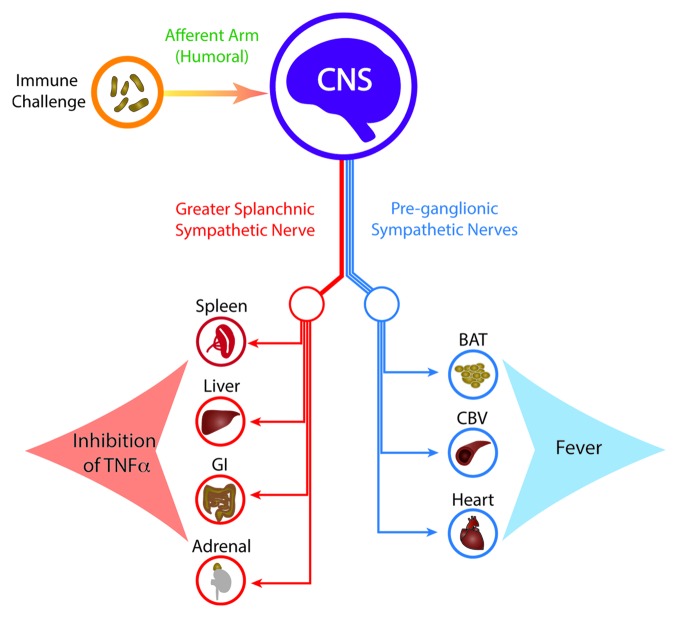Figure 1. Immune challenges such as i.v. LPS are sensed peripherally but are relayed to the central nervous system (CNS) mainly by humoral signals. In response to immune challenge, the brain activates two distinct sets of sympathetic pathways: the efferent motor pathway of the inflammatory reflex and the sympathetic outputs that cause tachycardia and fever. The efferent motor pathway of the inflammatory reflex traverses the greater splanchnic sympathetic nerves, which in turn drive the post-ganglionic sympathetic nerves to the spleen, liver, gastro-intestinal (GI) tract and adrenal glands. The final effect of this reflex is to inhibit TNFα production. Fever is caused by activation of sympathetic pathways to brown adipose tissue (BAT), cutaneous blood vessels (CBV) and the heart, raising body temperature and heart rate.

An official website of the United States government
Here's how you know
Official websites use .gov
A
.gov website belongs to an official
government organization in the United States.
Secure .gov websites use HTTPS
A lock (
) or https:// means you've safely
connected to the .gov website. Share sensitive
information only on official, secure websites.
